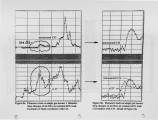| Title |
Demonstration of New Flame Monitoring System at a Pilot Scale Gas Fired Combustion Test Facility |
| Creator |
Khesin, Mark; Girvan, Rob |
| Publisher |
University of Utah |
| Date |
1996 |
| Spatial Coverage |
presented at Baltimore, Maryland |
| Abstract |
The new Burner Diagnostic System (BDS) for flame monitoring and combustion diagnostics is based on analysis of burner flame signatures in the frequency domain. Extensive testing of this system yielded proof that the temporal frequency component of flame radiation (as measured by flame sensors), when properly processed, provides a repeatable, useful indication of combustion parameters. This paper presents results of the pilot-scale testing of the new BDS on a well-instrumented combustion test facility (CTF). The 1.O-MBtu/hr, single-burner, gas-fired CTF was equipped with analytical instrumentation to measure NOx, 02, CO2, CO, and air and gas flows. Three different types of flame sensors were tested in the full range of load changes. The test results demonstrated that the new system can generate four groups of output signals that correlate well with measured burner parameters (NOx, CO, air-fuel ratio), and with flame stability and afford better understanding of the physical nature of these correlations. |
| Type |
Text |
| Format |
application/pdf |
| Language |
eng |
| Rights |
This material may be protected by copyright. Permission required for use in any form. For further information please contact the American Flame Research Committee. |
| Conversion Specifications |
Original scanned with Canon EOS-1Ds Mark II, 16.7 megapixel digital camera and saved as 400 ppi uncompressed TIFF, 16 bit depth. |
| Scanning Technician |
Cliodhna Davis |
| ARK |
ark:/87278/s6jw8hgz |
| Setname |
uu_afrc |
| ID |
10588 |
| Reference URL |
https://collections.lib.utah.edu/ark:/87278/s6jw8hgz |

















